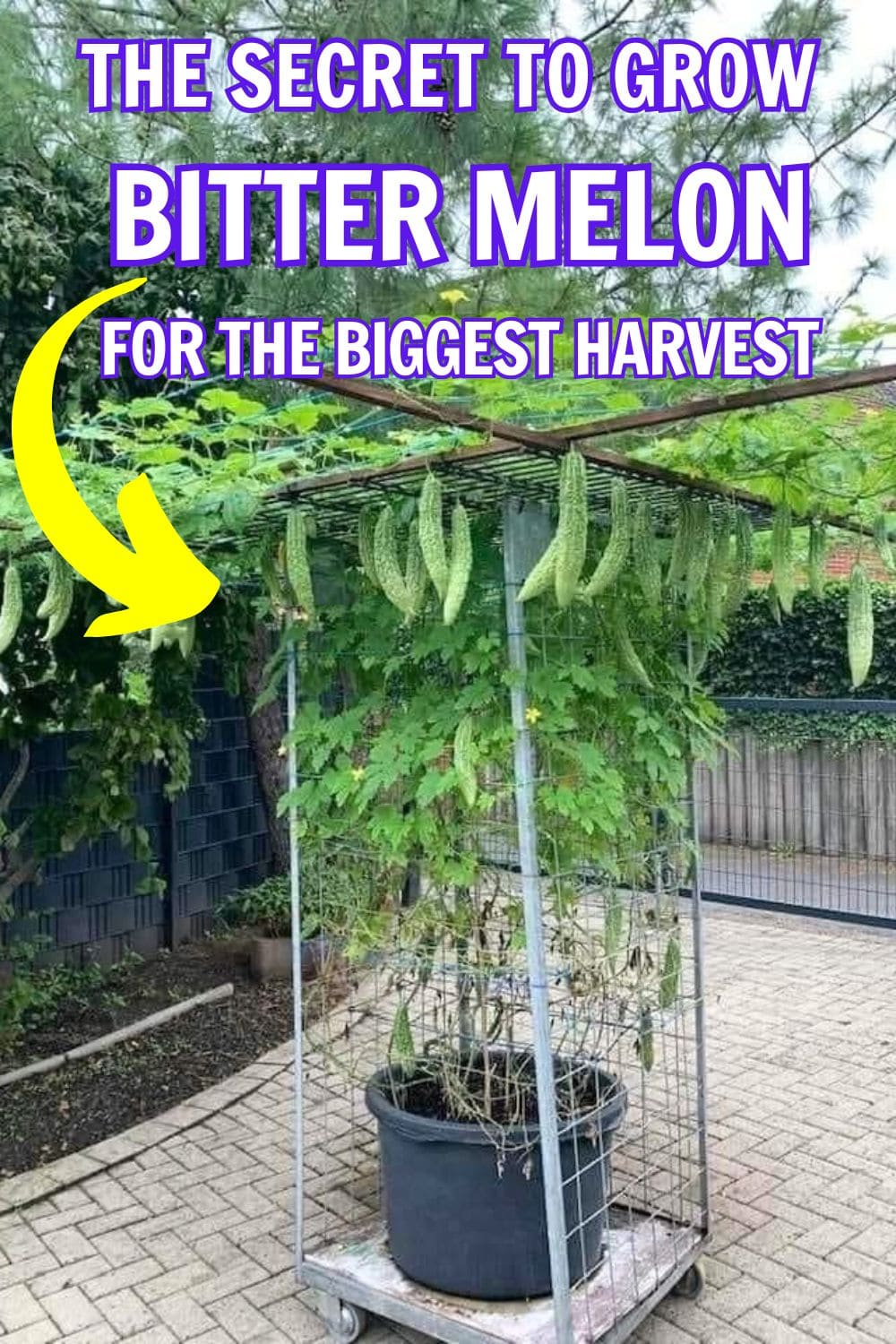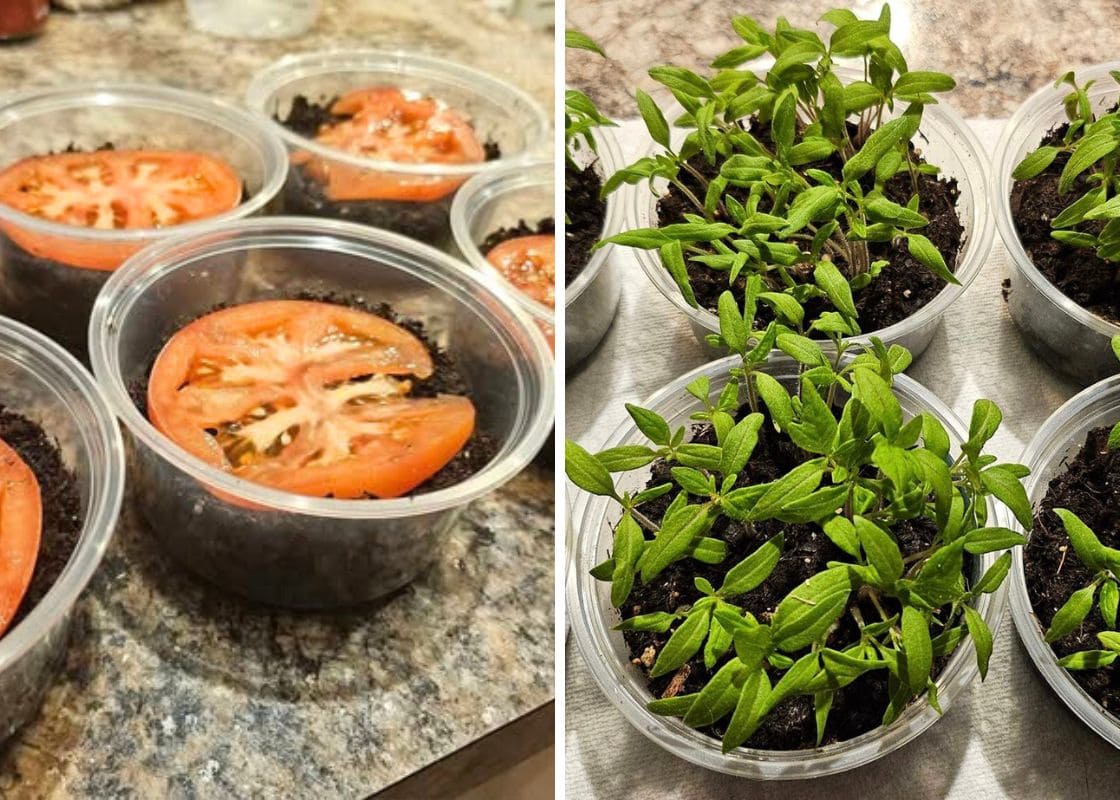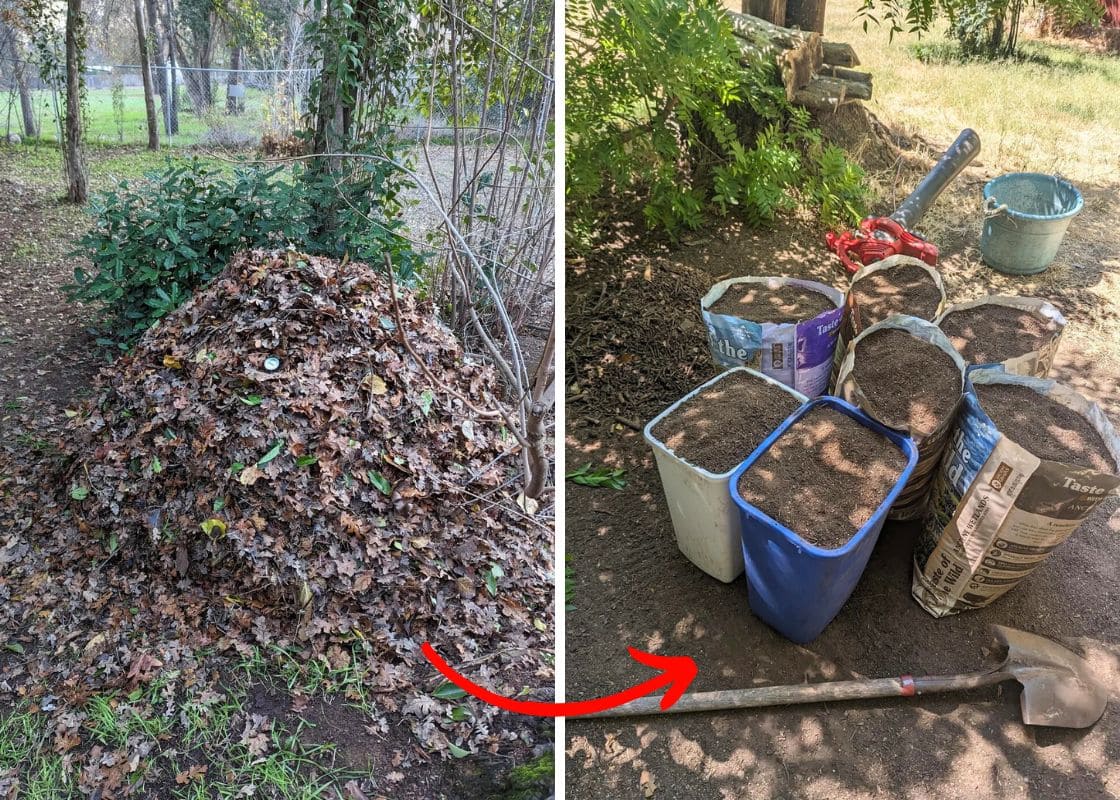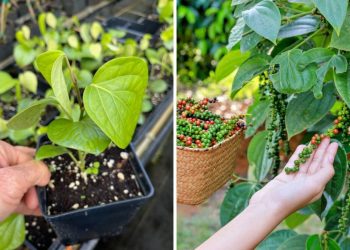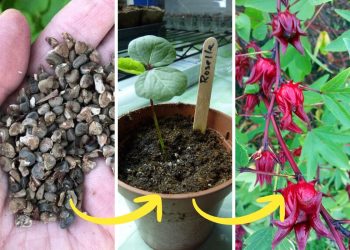Bitter melon, with its wrinkled green skin and sharp flavor, might not be the first plant you think of for a container garden but it absolutely deserves a spot.
It’s more than just a unique addition to your meals. This vigorous vine thrives in hot weather, produces generously, and adds striking vertical greenery to any patio or balcony.
And when grown in pots, it becomes easier to manage, protect, and even move around if needed.
Start with the Right Container
Bitter melon isn’t shy about growth. Even in a pot, it wants to stretch, climb, and sprawl.
You should choose a container that’s at least 12 inches deep and wide, though going up to 16-18 inches can significantly increase your harvest.
A 5-gallon pot is the absolute minimum as bigger roots lead to bigger vines, and that means more fruit.
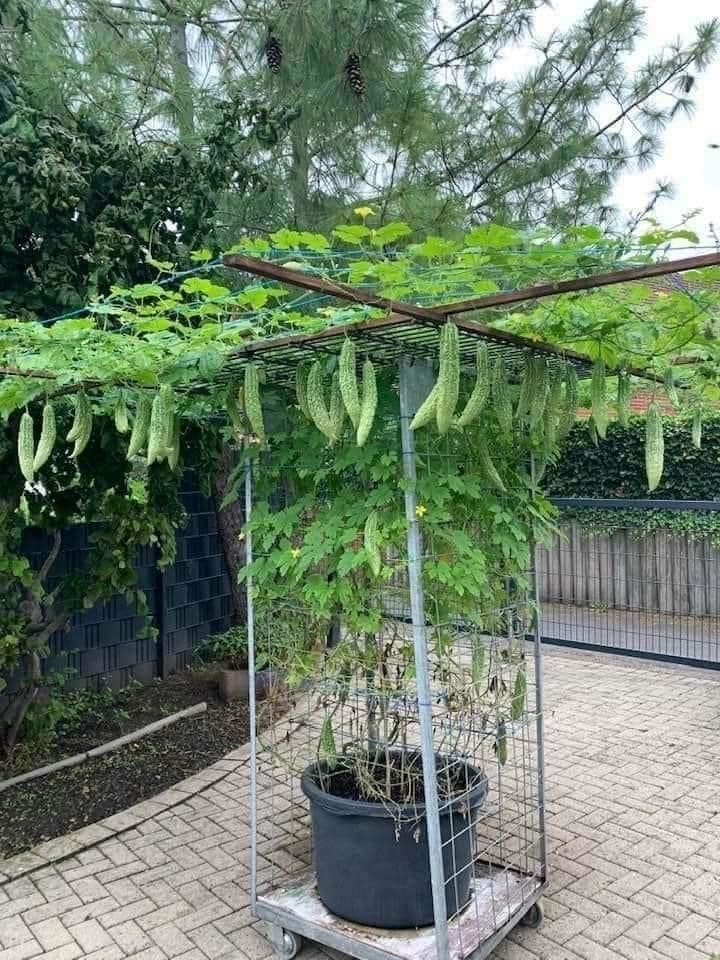
Plastic pots are popular because they retain warmth and moisture, which bitter melon loves. If you prefer clay, just keep in mind it dries faster, so more frequent watering will be needed.
Growing Tips:
ensure the pot is elevated slightly to improve drainage. Placing it on bricks or pot feet helps prevent root rot and discourages ants from nesting beneath it.
Use a Rich, Loose, and Well-Aerated Soil Mix
You want a loose, rich medium that drains well but holds enough moisture to keep the roots consistently hydrated.
A high-quality organic potting mix blended with aged compost is ideal. For better drainage and root aeration, add a handful of perlite or vermiculite.
Bitter melon prefers a soil pH between 6.0 and 6.7. If you’re using homemade compost and unsure of your pH, mixing in a small amount of pine bark fines can help buffer overly alkaline mixes.
Additionally, bitter melon roots grow fast but dislike being cramped. Refreshing the top few inches of soil with fresh compost mid-season can extend its productivity.
Sow Seeds the Smart Way
Start seeds indoors 4-6 weeks before the last frost if your growing season is short. In warm zones, you can sow them directly into the container once daytime temperatures consistently reach 70°F (21°C).
To speed up germination, soak seeds overnight in warm water. Some gardeners even gently nick the outer shell with a nail clipper to help them sprout faster.
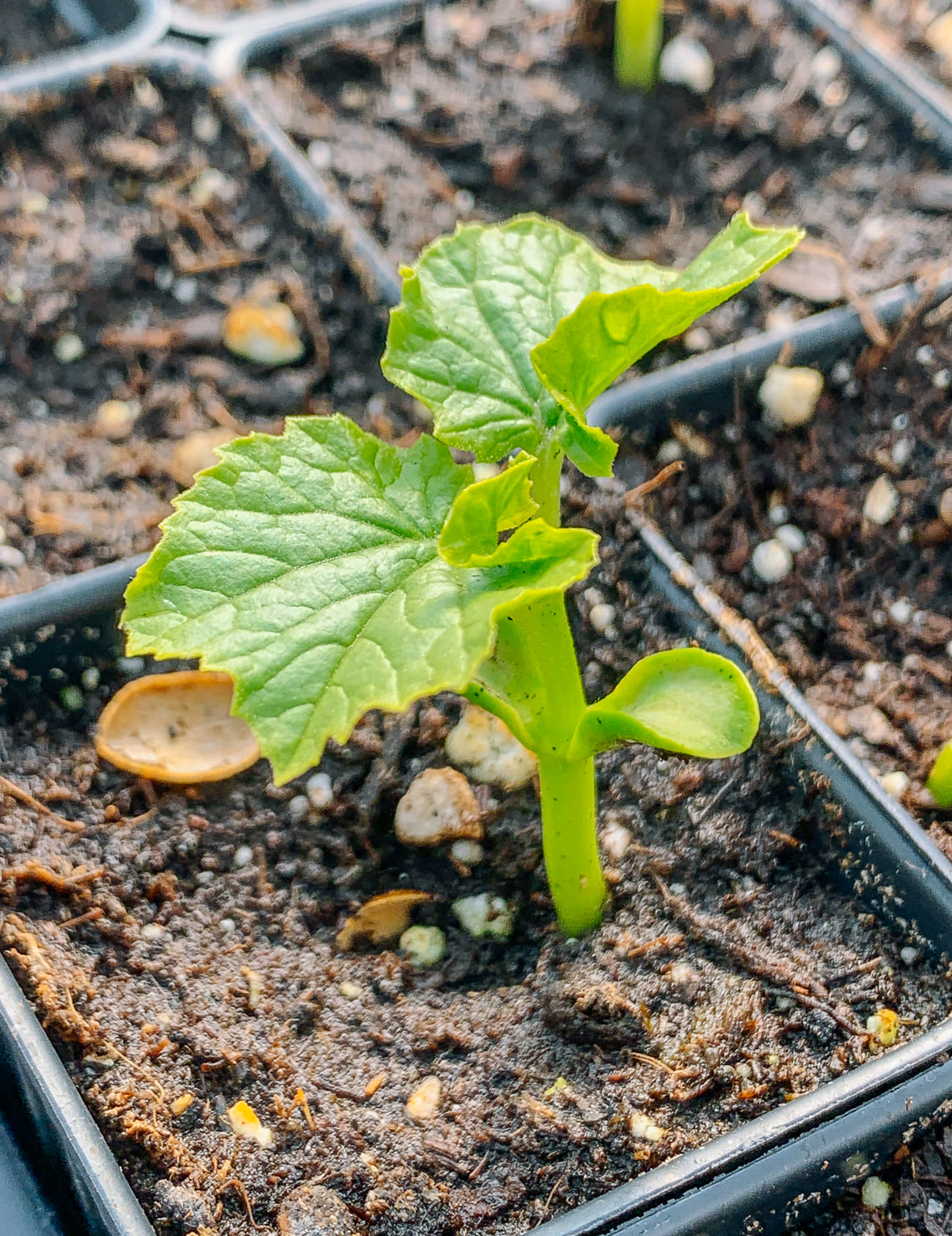
Next, you plant 2-3 seeds per pot, about ¾ inch deep. Once they sprout and grow their first true leaves, thin them to the strongest seedling.
Bitter melon dislikes transplant shock, so if starting indoors, use biodegradable seed pots that can be planted directly into the final container.
Let Bitter Melon Plants Soak Up the Sun and Stay Warm
Bitter melon loves heat. Give it a full-sun spot with at least 6-8 hours of direct light daily.
If you’re growing in cooler regions or early in the season, placing the pot near a wall or reflective surface can help amplify warmth. South-facing balconies or patios are ideal.
Once daytime highs are steady above 75°F (24°C), growth explodes. But if nights dip below 55°F (13°C), be prepared to move your pot or cover the plant with a light cloth.
Water Deeply, Feed Regularly But Carefully
This vine thrives in consistently moist soil, but it hates wet feet. You should water deeply when the top inch of soil feels dry, and make sure water drains freely.
Moreover, a light mulch like dried straw or shredded leaves can help reduce evaporation, especially in hot weather.
For nutrients, start with a balanced fertilizer (like 10-10-10) every two weeks while the plant establishes.
Once flowering begins, switch to a low-nitrogen blend to encourage fruit rather than leafy growth. Overfeeding nitrogen often leads to vigorous vines but very few fruits.
Give Them Room to Climb
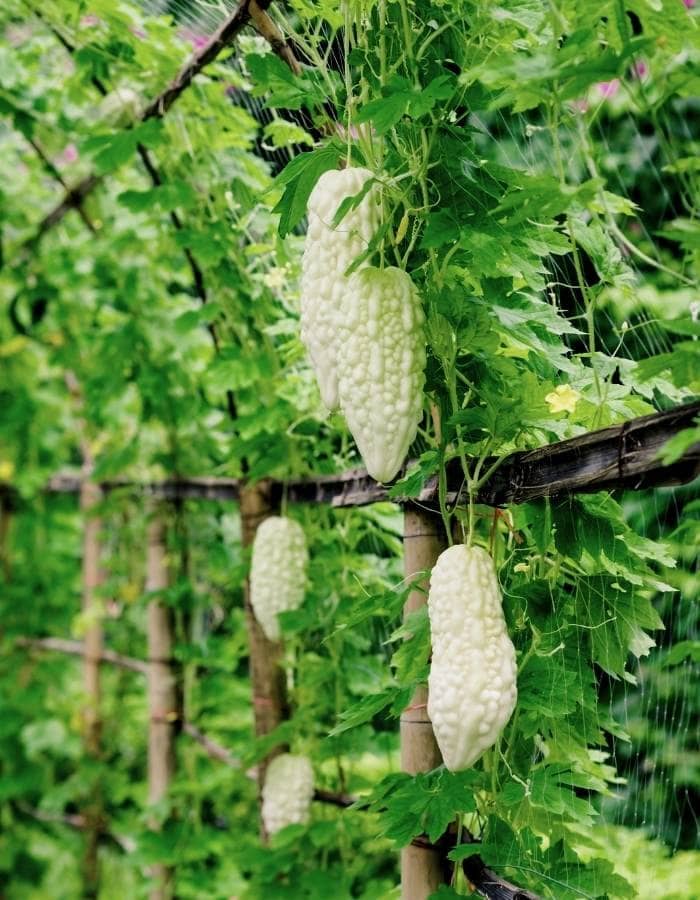
A healthy bitter melon plant will quickly stretch up to 10 feet or more. Set up a strong trellis, arch, or wire cage right from the beginning.
Trying to add support after it’s already sprawling is a recipe for tangled vines and broken stems.
Vertical growth improves airflow, reduces disease, and helps fruits develop straight rather than curled on the ground. You can also gently train vines by tying them loosely to the support with twine or soft strips of fabric.
Also, prune early side shoots after 5-6 leaves appear to encourage branching and stimulate more flowers. In pots, this helps control size while boosting yield.
Pest and Disease Watch
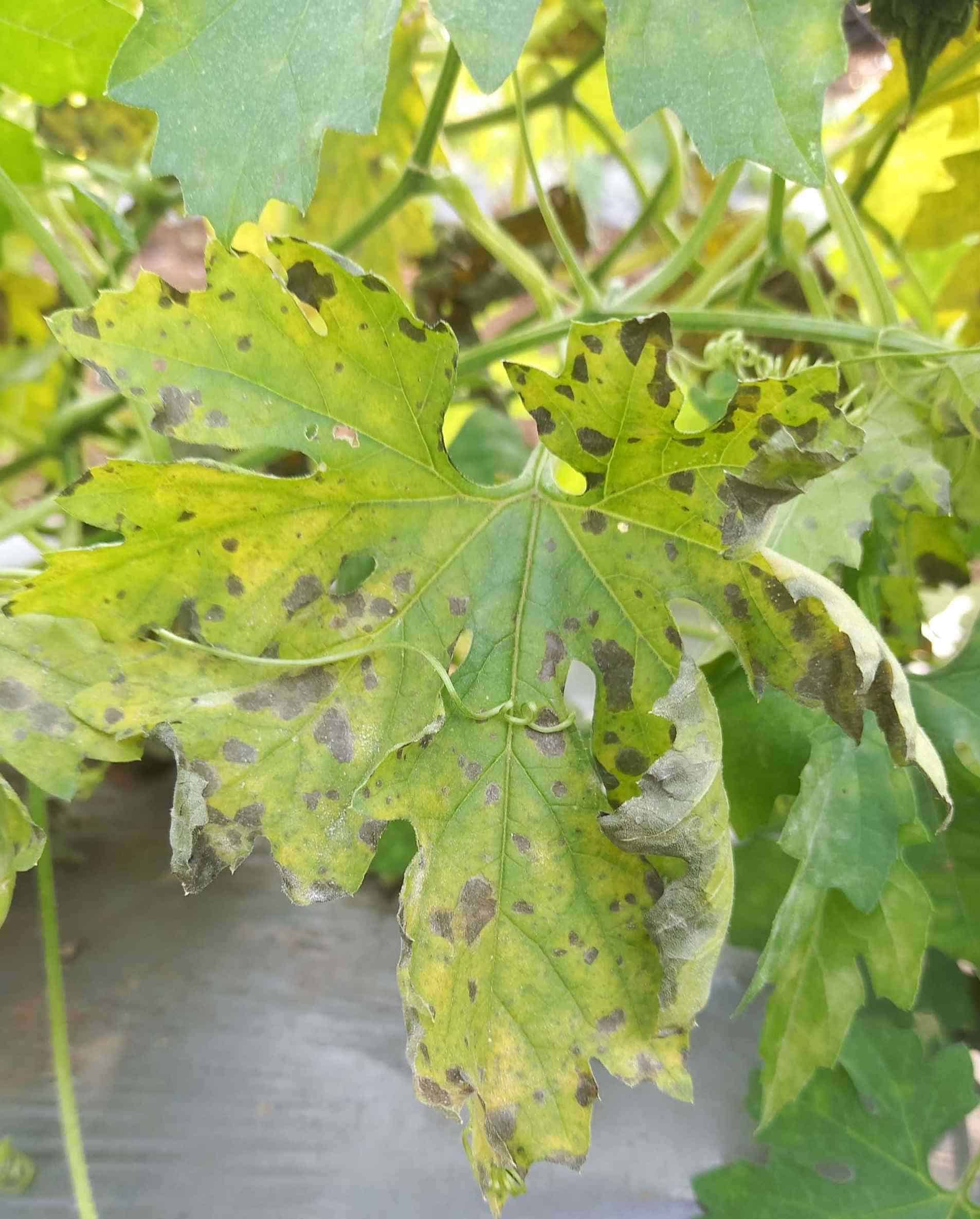
Bitter melon in pots is less likely to suffer from root diseases, but it can still attract aphids, whiteflies, or powdery mildew.
Neem oil or insecticidal soap works well, especially when sprayed in the evening. If mildew strikes, improve airflow, reduce watering overhead, and remove infected leaves.
Here’s a little-known observation: container-grown bitter melon tends to flower earlier and more prolifically in slightly crowded roots. A little stress can trigger better fruiting.
Harvest Time
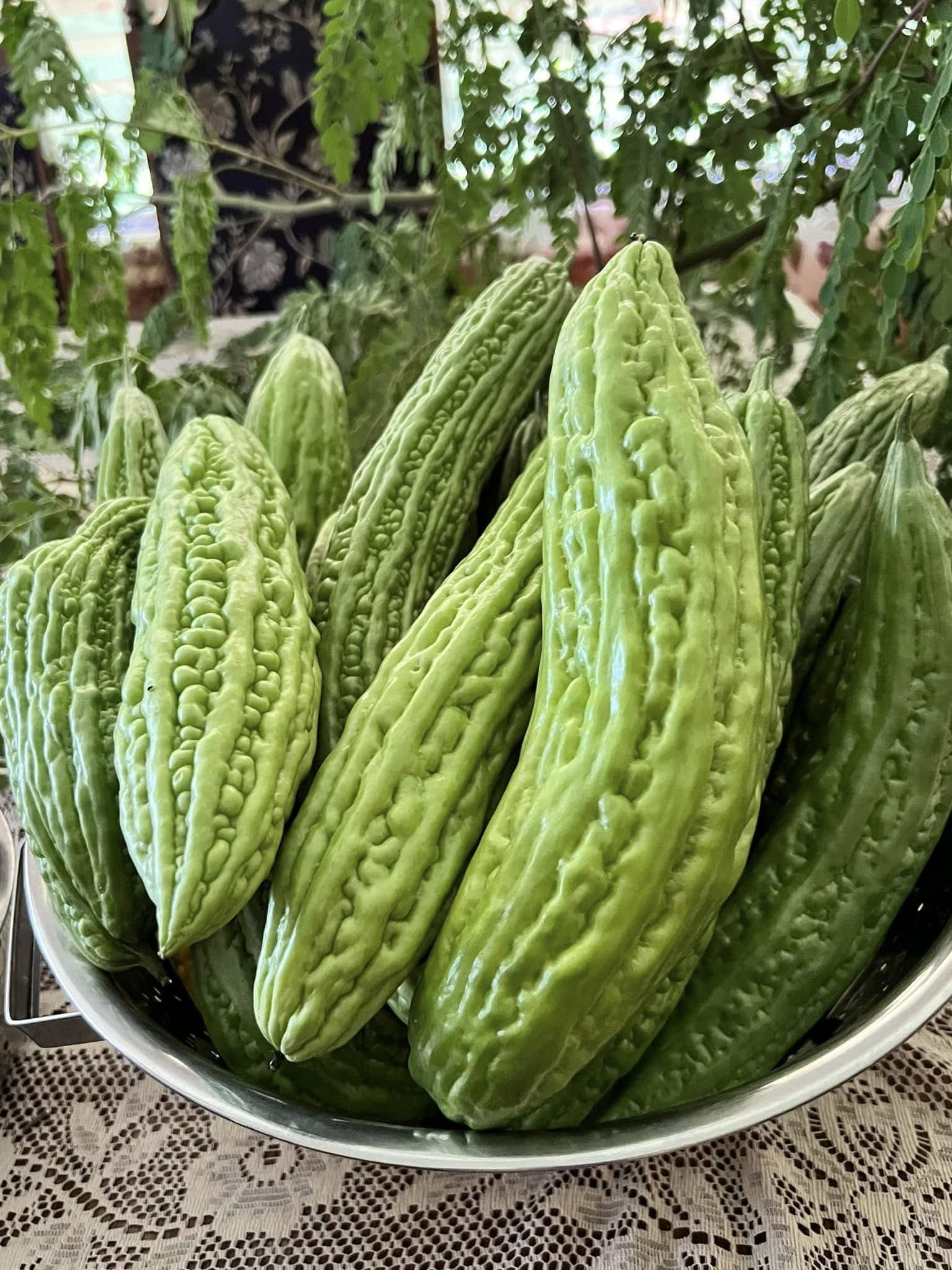
Bitter melon fruits mature fast, usually within 2-3 weeks of flowering. For the best texture and mildest bitterness, harvest when fruits are about 4-6 inches long, still bright green, and firm to the touch.
Once they start to turn yellow or orange, bitterness increases dramatically and the seeds begin to harden.
Always use scissors or pruners to cut the fruit cleanly. Twisting them off by hand can damage the vine or pull off immature buds.
If you want to save seeds, let one fruit fully ripen until orange, then scoop out the red seed pulp and dry the seeds for future planting.
